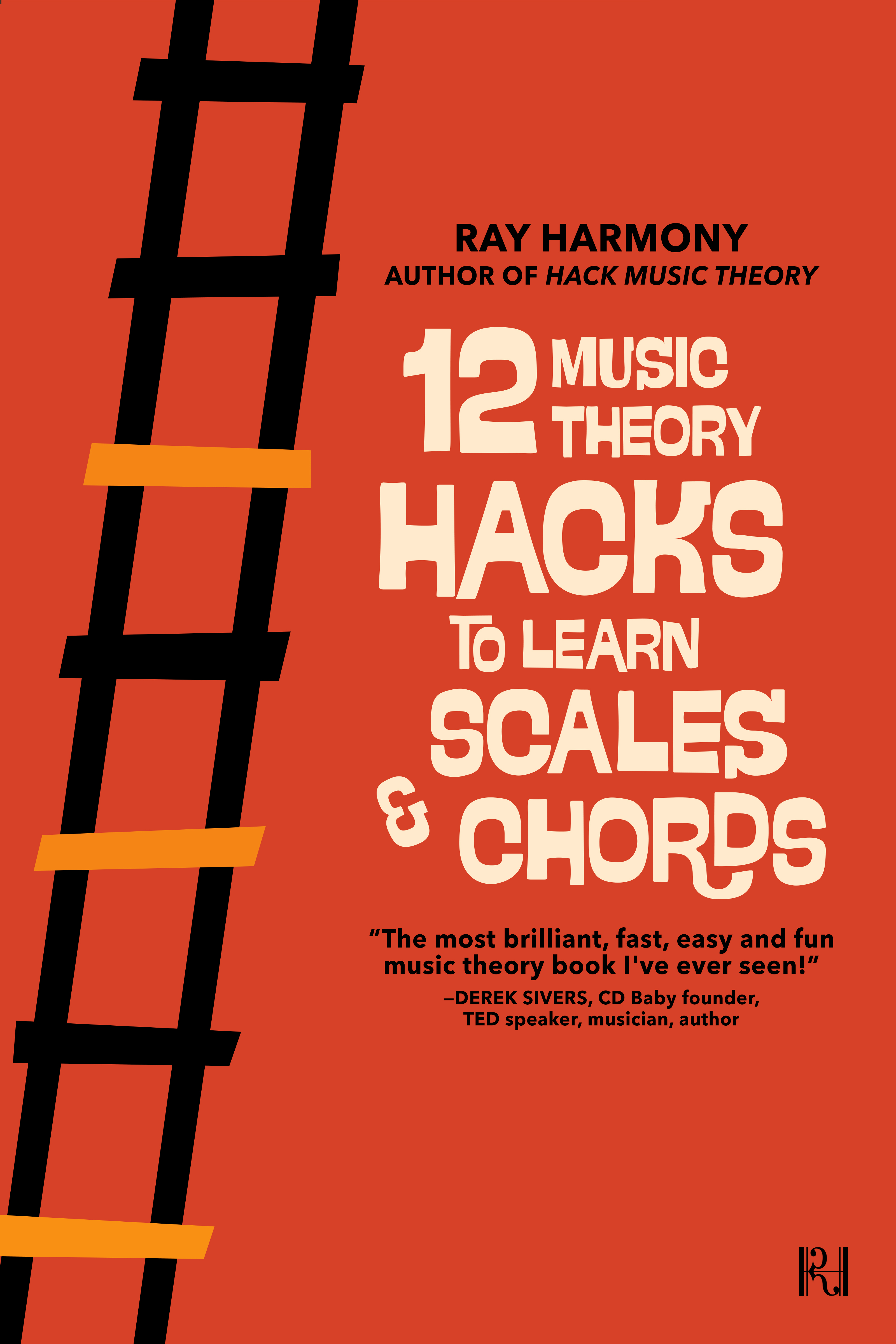Damian from Birmingham, England emailed us with this question: “I’ve watched all your videos and learnt so much already, thank you. I kinda get the idea of numbering notes, but I’m not sure how the numbers with flats work. Can you please explain how this whole numbering system works?” Thank you Damian, great question and a great opportunity to talk about one of the most important concepts in music theory: Spelling! But first, here’s my one sentence answer to your question:
Spelling is the numerical way of writing or talking about music, where each note is assigned the number of its degree in a scale, or chord.
Let’s work through an example of this now, using the A major and A minor scales. Remember, the major scale is the original scale, so all other scales are spelled in a way that shows how they differ from the major scale. Using the major scale semitone formula starting from A, we get A major: A B C♯ D E F♯ G♯, and then back to A an octave higher. We spell the notes of major scales as: 1 2 3 4 5 6 7, and 8, which is the 1 an octave higher. By the way, if you want to know more about semitone formulas and how to use them, check out chapters four and five in our free ebook: 12 Music Theory Hacks to Learn Scales & Chords. And if you want a much faster, but more advanced, method of working out scales, check out our Key Signature hack in the Hack Music Theory for Songwriting & Producing PDF.
Now, using the natural minor scale semitone formula starting from A, we get A natural minor: A B C D E F G, and back to A. Remember in A major the 3rd was C♯, but in A minor it’s C. In A major the 6th was F♯, but in A minor it’s F. And in A major the 7th was G♯, but in A minor it’s G. This tells us that the 3rd, 6th and 7th notes in natural minor scales are one semitone lower than where they are in major scales. To represent this one semitone lower, we add a flat (♭) to the spelling of the 3rd, 6th and 7th notes in natural minor scales, so in A minor the C is spelled as ♭3, the F is spelled as ♭6 and the G is spelled as ♭7. To be clear, these flats tell us that their associated notes are one semitone down from where they are in a major scale, they do not tell us that the notes themselves are flats, like in A minor where the ♭3 is C, a white note.
Lastly. Why is spelling useful? Let me show you one of many common examples that occurs in studios every day. Say you have a melody in A minor, like this: A → F → E → C, so that’s the 1 → ♭6 → 5 → ♭3. But, this melody is too low for the singer you’re working with, so you need to raise the whole melody into their range. This is called transposing, it happens all the time, and it’s super simple when you know the spelling of what you’re doing. So, say you want to move this melody from A minor up to D minor, you merely play the same spelling: 1 → ♭6 → 5 → ♭3, but in the D natural minor scale, so that’s: D → B♭ → A → F. Easy!
So that’s my answer! Thanks for reading. Now, here’s an exercise for you: Take your favourite melody and work out the spelling of its notes. This will start to reveal your personal preferences, which you can then use to develop your own unique style of writing music. This is one of the most powerful uses for spelling! Please let us know how it goes in the comments below, and if you’d like to learn more about spelling, check out chapter eight in our free book: 12 Music Theory Hacks to Learn Scales & Chords.
Do you feel a little bit smarter now than you did a few minutes ago? Then hit Subscribe so we can do it all again next week! And if you have a question you’d like us to answer here on Q&A Tuesday, please connect with us.
Kate Harmony
Music Teacher
Victoria BC, Canada
 | |
Wooohooo!!! You're a mere 30 minutes away from being even smarter than you already are. Just head over to your inbox now for your free download.
